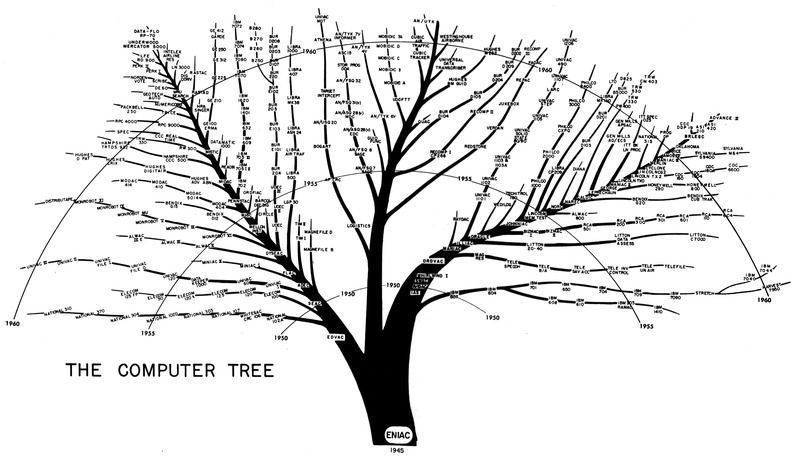ENIAC, generally and arguably considered to be the world’s first large-scale general purpose electronic computer, was the Big Bang of the computer industry. Credit for ENIAC rightly goes to two men, John Mauchly and Presper Eckert, who conceived of the machine and had major roles in developing its hardware during World War II. However, every good computer scientist knows that a computer, any computer, is not worth much without software. For ENIAC, no software and no software development process existed until six women took on the task of developing a programming process and writing the first programs for the machine. “Proving Ground” by Kathy Kleiman is the first book to tell the stories of these six women in detail. The book, and the restoration of these six women to their rightful place in computing history, is the result of Kleiman’s extensive research and personal interviews that stretched over decades.
The book refers to these women as the ENIAC 6. They are Kathleen “Kay” McNulty, Frances “Fran” Bilas, Francis Elizabeth “Betty” Snyder, Marlyn Wescoff, Ruth Lichterman, and Jean Jennings. Their story parallels the development of ENIAC’s hardware. All six women started working as “Computers” for the US Army in the early 1940s. Back then, a Computer was a person, usually a woman, who operated an electromechanical calculator to implement one computation in a complex algorithm. For these six women, the complex algorithm they were executing for the US Army was a differential calculus equation used to calculate the ballistic trajectories of artillery shells.
Every artillery piece needed a set of firing tables to tell the gunners how to incline their gun to hit a distant target. The factors that go into the calculation include the weight of the shell, the amount and type of propellant, the ambient air temperature and humidity, wind speed, and even the hardness of the ground under the gun, which affects recoil when the gun fires. As a result, every artillery piece needs many, many firing tables, and Computers operating electromechanical calculators needed about 40 hours of grinding out intermediate results to produce just one trajectory entry in one table. The task was enormous, and Aberdeen Proving Ground (APG), which had the responsibility for creating these firing tables, was perpetually under-resourced. There were not enough trained Computers or calculators to meet the need as arms manufacturers churned out new models of artillery for the war effort. Every new artillery piece needed a new set of firing tables and APG needed a faster way to generate trajectories.
The first attempt at speeding up the calculation of artillery shell ballistic trajectories was the use of a Differential Analyzer, created by the legendary Vannevar Bush at MIT in 1928. Nicknamed the “Giant’s Mattress Spring” because of its appearance, the Differential Analyzer was an electromechanical analog computer that used mechanical analogs of various functions such as gears to multiply and wheel-driven disk followers for integration. A variety of shafts and gears distributed intermediate results among the Differential Analyzer’s various function units. (You can glimpse Differential Analyzers in action in several science fiction films of the 1950s including “Destination Moon,” “Earth vs the Flying Saucers,” “The Magnetic Monster,” and “When Worlds Collide.”)
A Differential Analyzer could compute a complete ballistic trajectory in about 30 minutes, which was a vast improvement over Computers running calculators. However, Differential Analyzers were hand built, very expensive, and therefore extremely rare. The Moore School of Engineering at the University of Pennsylvania in Philadelphia had convinced the Ballistic Research Laboratory (BRL) at APG to purchase one Differential Analyzer for research before World War II, and BRL had agreed, with the provision that APG could commandeer the machine in the case of a national emergency. The Differential Analyzer was installed in the basement of the Moore School and used for research. The US entry into World War II constituted a national emergency, and the Differential Analyzer at the Moore School soon started cranking out ballistic trajectories for APG.
The Differential Analyzer was a finicky machine and needed constant minding. Who better to mind it than the Computers who were performing the same calculations on calculators for APG, and who were coincidentally located in the same building at the Moore School. The Computers separated into day and night shifts so that they could run calculations and crank out firing tables continuously.
All of this is prolog to ENIAC’s development, because ENIAC was specifically designed to compute ballistic trajectories. ENIAC’s initial design closely resembled an electronic version of the Differential Analyzer, and it was developed thanks to a contract between the Moore School and APG. The project started in 1943, and the machine became operational in late 1945. It arrived too late for the war, but it sparked the computer revolution.

The computer family tree started with ENIAC in 1945, according to this US Army graphic that covers computers through the middle 1960s. Image credit: US Army Research Lab
The original ENIAC was not a computer that we’d recognize today. It was not a stored program von Neumann machine. As conceived, ENIAC was a collection of unconnected electronic function units, including twenty accumulators that could add and subtract 20-digit decimal numbers, a multiplier unit that could perform 20-digit multiplications by taking over control of four accumulators, a square rooter/divider that used a different set of four accumulators to do its work, function tables to hold constants that were built with thousands of rotary switches, and various control and sequencing units. An IBM card reader supplied data for the calculations and a card punch and printer served as the machine’s output devices.
Like the Differential Analyzer, ENIAC’s function units needed to be connected in the proper sequence to compute a specific equation. This is called physical, data-flow, or direct programming and does not resemble today’s concept of software programming. It’s more akin to today’s FPGA programming. (Later, a way would be found to use the function tables as a small instruction ROM, which required a fixed machine configuration. This configuration made ENIAC programmable as we understand it today, but the machine ran four times slower due to a loss of parallelism.)
Eckard and Mauchly developed ENIAC’s hardware, but the ENIAC 6 developed the methodology to program the machine and created the early programs for it including the program to compute ballistic trajectories. They also created an early version of flowcharting, which they called “pedaling” sheets, and developed methods for debugging their programs including single-stepping and breakpoints that we continue to use today. The job of creating these programming and debugging methodologies might not have been possible at all if ENIAC’s conceptual design had not mimicked the manual calculation of algorithms by Computers using calculators and the Differential Analyzer. It also might not have been possible without the knowledge and experience of the ENIAC 6.
“Proving Ground” is the story about how these six women invented programming on the world’s first electronic computer, but it is something more than that. It also chronicles the pervasive roadblocks and disadvantages that women endured throughout the professional world of the 1940s.
As newly recruited Computers, the US Army gave the women a civil service grade of “SP-4,” where “SP” means subprofessional and subscientific. Only men were allowed to be assigned “P” or professional grades. In addition, the women were told by their male mathematics instructors at the Moore School that they should be home cooking and having babies. (The endowment from Alfred Fitler Moore that created the Moore School in 1923 specifically excluded women from the student body.)
When it came time to first demonstrate ENIAC to the public in February 1946, no women from the ENIAC 6 participated at the front of the room with the presenters. They answered no questions. Instead, they were asked to be hostesses and to serve coffee to the guests. When the day ended with a large formal dinner that included representatives from the US Army, deans from the University of Pennsylvania, and invited guests, no women were invited. The roles of the ENIAC 6 women were not mentioned, although their ballistic trajectory program was the centerpiece of the demonstration.
The repercussions of these slights and omissions in 1946 rippled through time for four decades. When Kathy Kleiman first started to research the names of the women that she saw in the original ENIAC publicity photos from 1946, she drew a blank on their names, which did not appear in the photo captions. No one seemed to know who they were or that they even existed. The history of the ENIAC 6 Computers and their role in developing ENIAC’s programming had been lost to history. If Kleiman had not attended ENIAC’s 40th anniversary event in 1986, she might never have uncovered the history of the ENIAC 6.
However, she did attend the event and that’s where she met four of the ENIAC 6 women. Starting with those connections, she tracked down the other members of the ENIAC 6, teamed up with senior PBS producer David Roland and recorded their oral histories, collected photos, and co-produced a documentary film titled “Computers: The Remarkable Story of the ENIAC Programmers,” which premiered at the Seattle Film Festival in 2014. Her book, “Proving Ground,” was published last year, and it continues Kleiman’s efforts to make the story of the ENIAC 6 better known.
Kleiman went to all this effort because she believes that women in computing need more female role models like the ENIAC 6, so it’s imperative to document their history. She was strongly motivated because she wanted to have such role models as a budding computer scientist. She’s now an attorney specializing in Internet law and policy and is a Senior Fellow teaching Internet Technology & Governance for Lawyers at American University’s Washington College of Law in Washington DC.
To me, the story about the ENIAC 6 women sounds similar to the story from the recent book and award-winning movie “Hidden Figures,” which told the history of three African-American women who worked as mathematicians and programmers for the US space program at NASA in the 1960s. Their stories also disappeared from history until Margot Lee Shetterly wrote a book about them in 2016. “Proving Ground” and “Hidden Figures” have many parallels and show that little had changed to improve women’s standing in science and technology from the 1940s to the 1960s. From personal experience, I can tell you that things weren’t better for women in engineering during the 1970s or the 1980s either.
If you’d like to see Kleiman’s documentary film about the ENIAC 6, it’s available as a pay-per-view video on Vimeo. For more information about Kleiman’s book and film, click here. The book just came out in paperback form last month.
Note: This article is dedicated to my wife, Pat Cochran, one of thousands of women engineers who have made myriad industry contributions over the last several decades, despite the artificial handicaps and roadblocks placed in their paths due to their gender.





